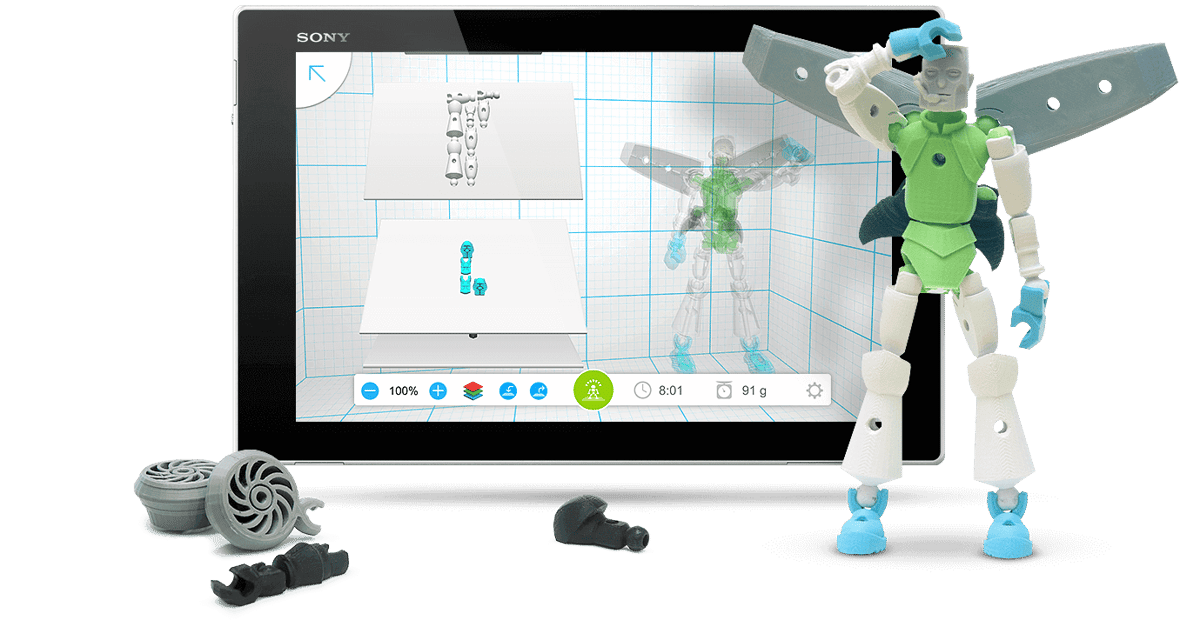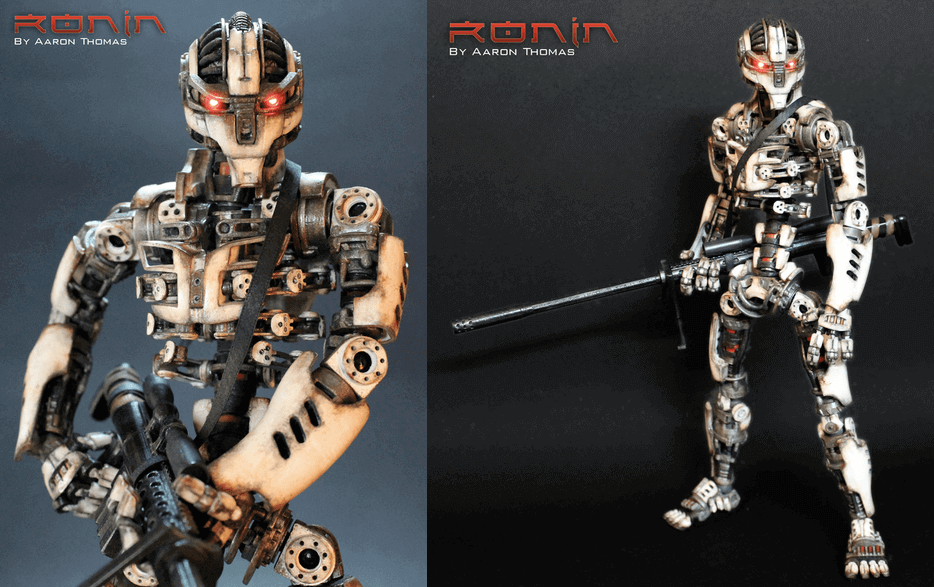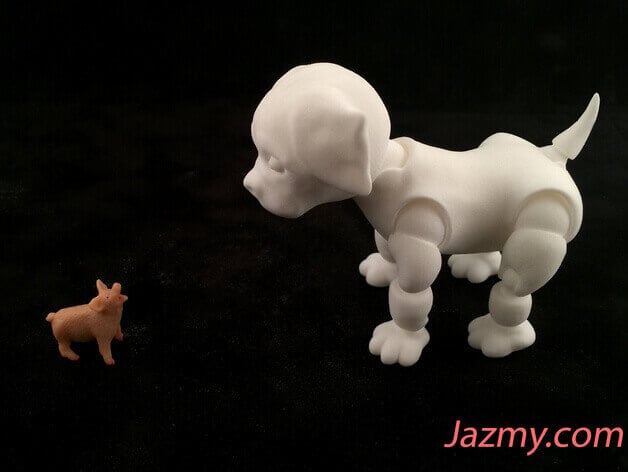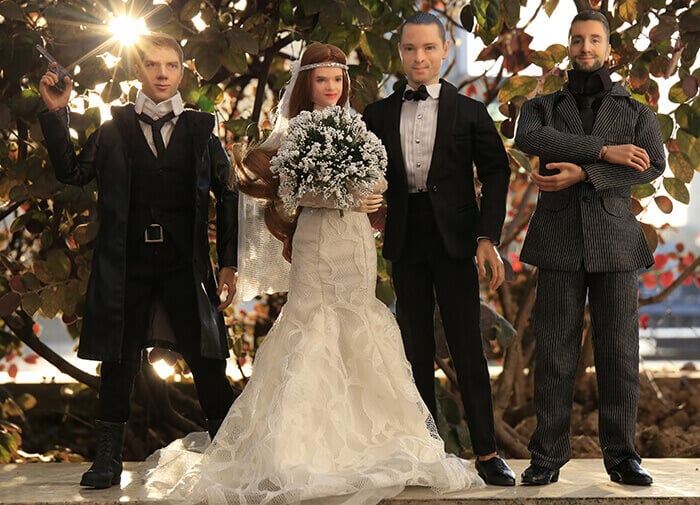As 3D printers make their way into the everyday lives of a growing number of people, the types of objects and products that are becoming available to be 3D printed are rapidly becoming more complex and yet easier to create. One clear example of this trend is the rise of fully articulated objects and action figures (a.k.a. 3D selfies), including the fully articulated selfies, something that might drive the next wave of consumer 3D printing requests.
Making it Easier to Make Complex Things

The trend is similar to the evolution of online software applications. Simple online programs such as Trello, Slack, WeTransfer or Dropbox let us accomplish tasks that used to be complex, even more rapidly and more efficiently than in the past. Likewise an online App such a Modio lets us create complex articulated robots, monsters, and characters by simply 3D printing every part. The software rapidly carries all the difficult calculations necessary to establish the exact shape of each connection and all you are left with the is the fun of creating something truly unique.
That is probably why Autodesk acquired it. They made it part of its growing 123DApp line up (All3DP’s comprehensive reviews here), renaming it Tinkerplay to leverage on the accessibility and recognizability of Tinkercad, one of its most commonly adopted online 3D design tools. However, the articulated object trend has been manifesting itself in many ways.
Only with 3D Printing

A very noticeable one is the Ronin project by Aaron Thomas. Ronin is a fully articulated action figure that resembles a futuristic battle robot. Printed with a desktop Ultimaker 2 3D printer, Ronin boasts over 50 points of articulation making him fully poseable. This level of complexity has never been achieved in any “traditional”, injection molded action figure and is only feasible through 3D printing.
The level of Ronin’s detail is astonishing. For example, each spine segment of Ronin’s backbone consists of 10 individual pieces! Aaron dedicated six whole months to the development of this figure as it required tons of tweaking, redesigning and test printing to reach its final state. The goal is to use this statue as a prototype for a crowd funding campaign in order to proceed to the establishment of a production line for the Ronin.
High resolutions and full-color 3D printers have been available for a few years now. ore people have had the chance to experiment and gain familiarity with the possibilities they offer. This comes as a game changer for all those single piece self portrait or mini-me figurines and toys which have become available over the past few years, as movable parts mean more interaction possibilities, better posing abilities and increased value.
Move!

So it happens that toys such as this 3D Jointed Puppy Dog Toy become featured models on Thingiverse’s homepage. While it is a rather simple item to 3D print, it is easy to see how it can be considered to have interaction characteristics that make it superior to any traditional injection molded toy. The ball joint system was designed for easy removal of the supports, making it a simple to 3D print yet way more entertaining toy.
So the next logical step is that of fully articulated selfies. UK based startup 3DforUS has already begun offering action figures with a full-color, high-res 3D printed head and a standard injection molded body. While this is currently the best option available, with some desktop FFF 3D printing and the digital tools inspired by Tinkerplay, anyone could create a fully articulated custom body using the data from a 3D scan. If you had a choice between yourself as a statue or a super action hero, which would you choose?

License: The text of "3D selfies evolve: Design your posable robot" by All3DP is licensed under a Creative Commons Attribution 4.0 International License.